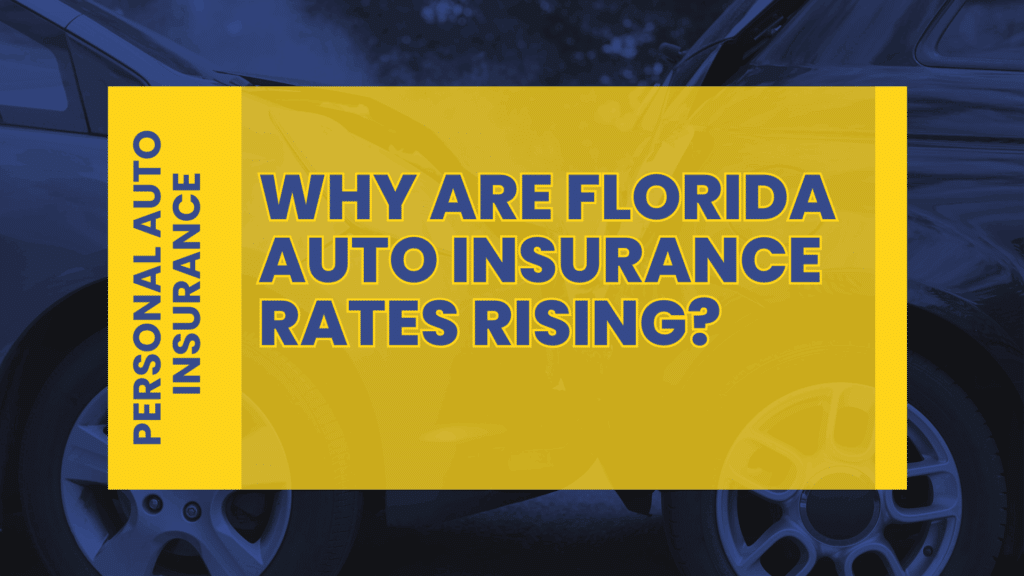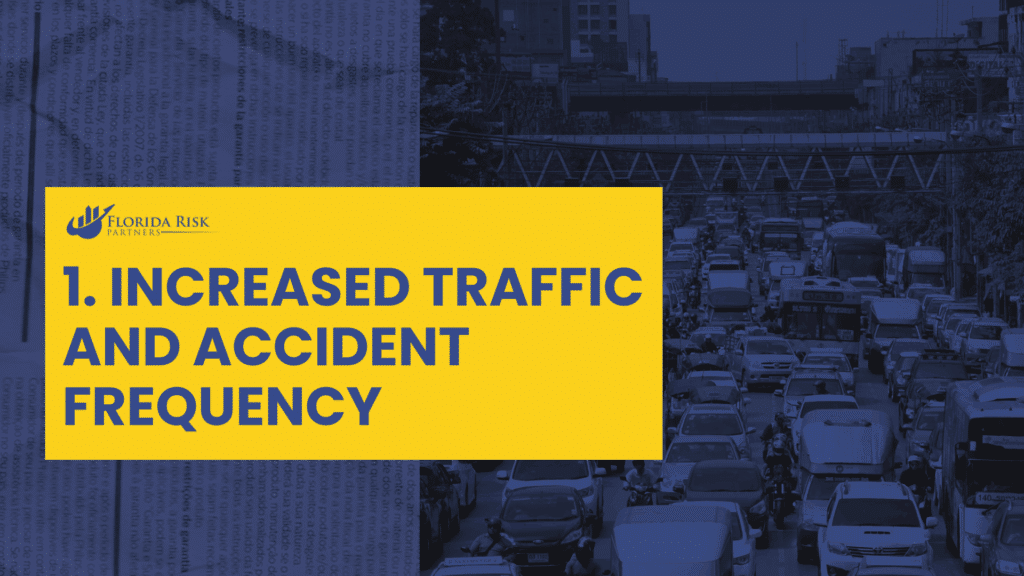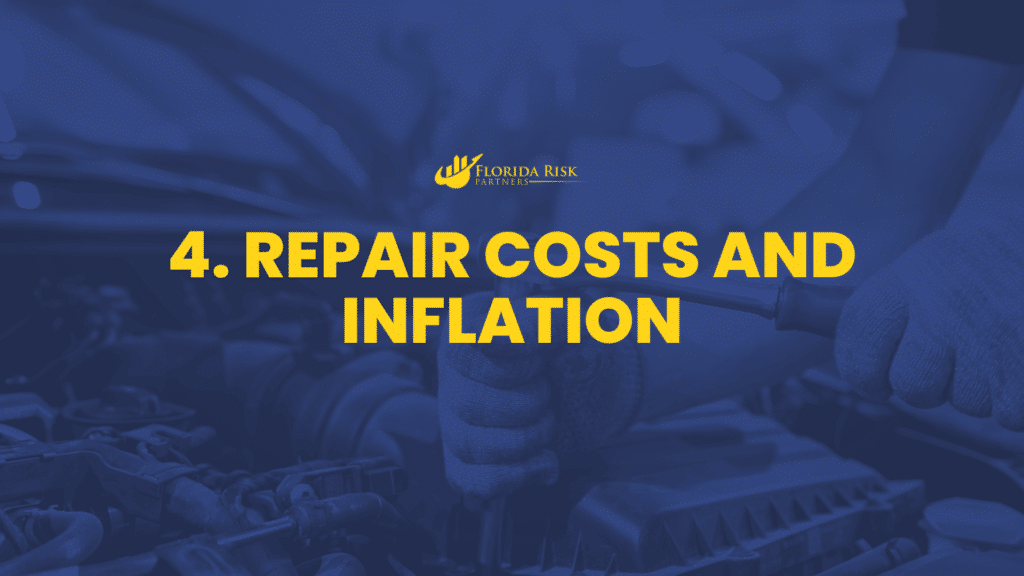-
Main Office: 1434 E. Bloomingdale Ave Valrico, FL 33596-6110
-
Phone: (888) 601-6660
-
Email: info@floridariskpartners.com

Understanding the Factors Driving the Highest Premiums in the Country
If you’re a Florida driver, you’ve likely noticed your auto insurance premium going up—sometimes significantly—over the last year. You’re not alone. In fact, Florida consistently ranks as one of the most expensive states in the country for car insurance. But what exactly is driving these rate increases? Is it something you did, or is there more at play?
In this post, we break down the top reasons Florida auto insurance premiums are rising and what drivers can do to stay informed and prepared.
Florida Has Some of the Highest Auto Insurance Rates in the Nation
According to recent industry reports, the average full coverage premium in Florida is projected to exceed $3,400 in 2025, a figure that’s nearly 55% higher than the national average. This dramatic price tag puts Florida in the top three most expensive states for auto insurance.
But it’s not just one factor causing the increase—a perfect storm of market conditions, environmental risks, legal system challenges, and economic pressures are contributing to rising costs across the board.
1. Increased Traffic and Accident Frequency
Florida is one of the fastest-growing states in the U.S., and that means more drivers on the road. Heavier traffic leads to more accidents, and more accidents lead to more claims. Insurance companies base their pricing on risk, and with a higher likelihood of crashes, Florida drivers are collectively seen as a bigger risk pool.

Major metro areas like Tampa, Miami, and Orlando are particularly affected due to congested roadways and high tourism traffic. When accident rates go up, insurance companies respond by raising rates for everyone—even safe drivers.
2. Severe Weather and Catastrophic Losses
Florida’s weather can wreak havoc on vehicles, and insurers are feeling the impact. Between hurricanes, flooding, hail, and windstorms, the frequency of weather-related auto claims is far higher in Florida than in many other states. In recent years, catastrophic events like Hurricane Ian have led to tens of thousands of total-loss vehicle claims, putting a massive financial strain on insurers.
Even if your own car hasn’t been damaged, these widespread losses lead to a phenomenon called loss cost sharing—where all policyholders help cover the industry’s claims costs through higher premiums.
Want to learn how to protect your vehicle during storm season? Read our guide to hurricane-proofing your auto coverage.
3. Litigation, Fraud, and Legal Expenses
Florida has a reputation for being a litigation-heavy state, particularly when it comes to personal injury and property damage claims. Opportunistic fraud schemes involving staged accidents or inflated injury claims also drive up insurer losses.
As a result, insurance companies often face higher legal costs in Florida, and they price that risk into your premium. This is especially relevant in a no-fault state like Florida, where Personal Injury Protection (PIP) coverage is mandatory and a common target for abuse.
Curious how Florida’s no-fault system affects your coverage? Check out our Florida Insurance 101 guide.
4. Repair Costs and Inflation
It’s not just the number of claims—it’s also the cost to settle them. Vehicle repairs have become more expensive due to rising labor costs, parts shortages, and inflation. From windshields to computer sensors, today’s cars are more complex and costly to fix.

According to industry data, the average cost per claim has increased by over 20% in the last two years alone. Insurers must account for these higher expenses in their pricing models, which translates into steeper rates for policyholders.
5. Uninsured and Underinsured Drivers
Florida also ranks among the worst states for uninsured motorists, with nearly 1 in 5 drivers lacking active auto insurance. This adds further pressure on the system because when uninsured drivers cause accidents, insurance companies often end up paying out more than expected—especially if you carry Uninsured Motorist (UM) coverage.
This added financial risk for insurers once again contributes to higher average premiums across the board.
Want to make sure you’re protected against uninsured drivers? Explore the benefits of UM/UIM coverage.
What Can You Do About It?
While many of the causes behind rising rates are outside your control, you’re not powerless. Understanding how Florida’s insurance landscape works is the first step to making smarter decisions.
In the weeks ahead, we’ll break down how to:
- Choose the right coverage for your needs
- Understand what affects your rate
- Compare quotes like a pro
- Save money without cutting essential protection
- Prepare your policy for storm season
By educating yourself now, you’ll be in a much better position to find savings, improve your protection, and avoid costly gaps in coverage.
Ready to Review Your Policy?
If you’re unsure whether your current coverage still makes sense—or if you just want a second opinion—our team is here to help. Schedule a free policy review today and get personalized guidance based on your needs and driving habits.
Call Us Or
Schedule an Appointment
Select an agent below to view our online calendars and select a day and time that works best for you or call us directly at 888-601-6660. When you use our online calendars, you will receive an email with more information.



